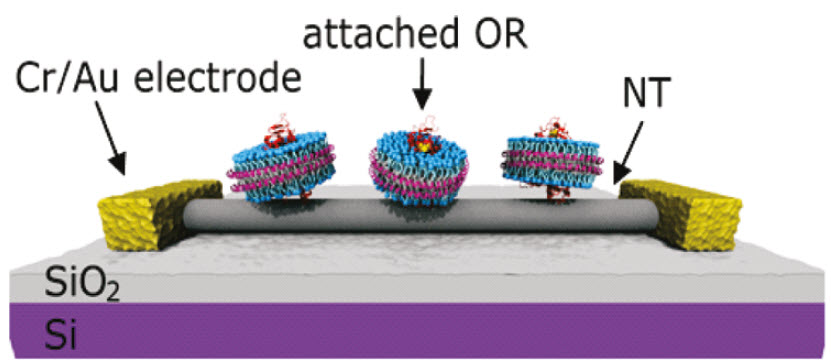Artificial nose created with carbon-nanotube transistor and DNA
July 27, 2011

Schematic of a carbon nanotube transistor functionalized with mouse olfactory receptors on nanodiscs (credit: Robert Johnson)
Researchers at the University of Pennsylvania have developed a chemical sensor that combines a carbon nanotube transistor with olfactory receptor proteins, the cell components in the nose that detect odors.
The sensor comprises a single-walled carbon nanotube field effect transistor (swCN-FET) with a nanoscale layer of single-stranded DNA (ssDNA) adsorbed to the tube’s outerwall. The current through the swCN-FET shows a characteristic response to gaseous analytes. This response varies depending on the base sequence of the adsorbed ssDNA.
The test case for their nanotube device was to function as a sensor for airborne chemicals. These grafted olfactory receptors could ultimately be used to create an artificial nose or for pharmaceutical research, the researchers said.
The research was supported by the Defense Advanced Research Projects Agency’s RealNose project, Penn’s Nano/Bio Interface Center, the National Science Foundation, and the Department of Defense.
Brett R. Goldsmith, et al., Biomimetic Chemical Sensors Using Nanoelectronic Readout of Olfactory Receptor Proteins, ACS Nano, 2011; 5 (7): 5408 [DOI: 10.1021/nn200489j]